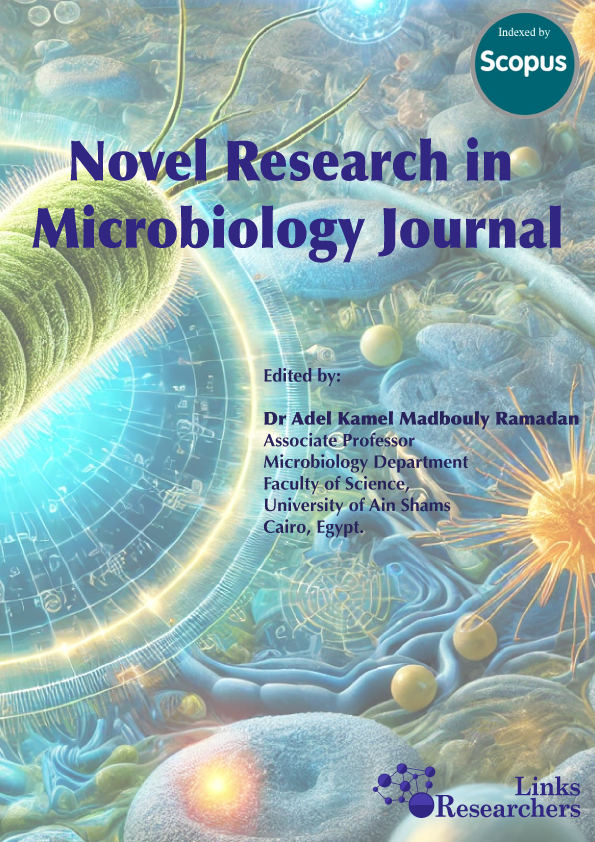Bio-production of alkaline protease by Trichoderma longibrachiatum and Penicillium rubidurum using different agro-industrial products
Novel Research in Microbiology Journal (2021), 5(3): 1241-1255
Bio-production of alkaline protease by Trichoderma longibrachiatum and Penicillium rubidurum using different agro-industrial products
Bikash Chandra Behera1; Bijay Kumar Sethi1; Sonali Mohapatra2; Hrudayanath Thatoi3; Rashmi Ranjan Mishra1*
ABSTRACT
Alkaline protease being active in neutral to alkaline pH has huge demands in food, detergent, leather and pharmaceutical industries. Its production from agro-industrial wastes not only lowers the production costs but also reduces the environmental problems. Hence, the present study aimed to search for new potential microbes, which can produce alkaline protease enzyme, to meet the industrial demands. In this study, 13 fungal spp. were isolated on potato dextrose agar medium (PDA) from mangrove soil through serial dilution, and then were streaked on the skim milk agar medium for qualitative screening of protease production. Out of 13 fungal spp.; only 7 spp. were able to produce proteolytic zones through the proteolytic assay. The Relative enzymatic index (REI) value (Zone diameter/Colony diameter) of all the fungal isolates that produced proteolytic zones on skim milk agar medium was evaluated. Only 2 fungal isolates which showed maximum REI value were selected, and then identified morphologically and molecularly as Trichoderma longibrachiatum (Accession no. MF144551) and by Penicillium rubidurum (Accession no. MF144561). Submerged fermentation was carried out using different agro industrial substrates to quantify for protease production, where the supernatants obtained were used for alkaline protease estimation. Among the different tested substrates, soybean powder and wheat bran were the most suitable substrates for maximum protease production by T. longibrachiatum (233.78±7.12 U/ mg) and P. rubidurum (228.61±11.13 U/ mg), respectively. The partial purified enzyme from these fungi showed maximum proteolytic potentials at pH 8.0 (P. rubidurum) and pH 9.0 (T. longibrachiatum), with optima temperature of 40 °C. Among the tested heavy metals, only Mn2+ expressed marginal enhancement of the protease enzyme activity.
To share on other social networks, click on any share button. What are these?





